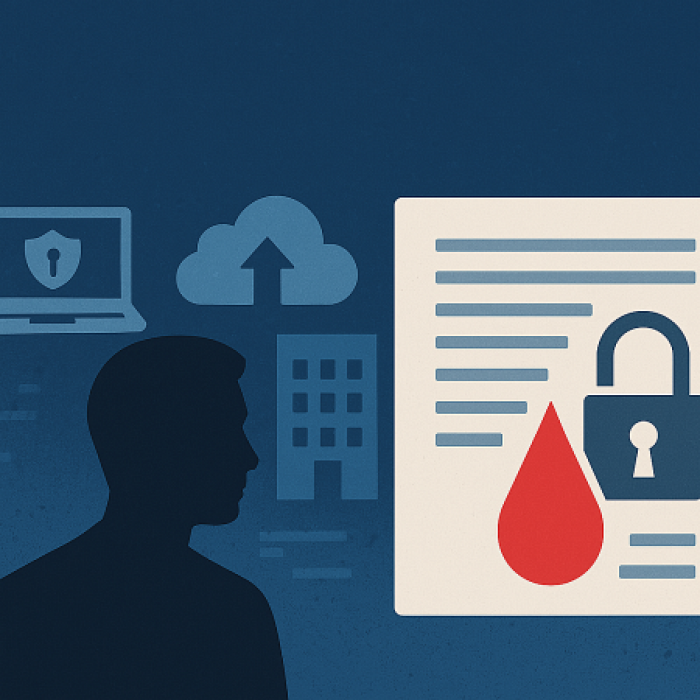716M - that is the number of user contacts leaked on the dark web in 2024. The vast majority of these breaches came from major industries, with tech companies at the top of the list, followed closely by media, finance, commerce, and healthcare.
The most concerning part? These breaches aren't one-off events. They highlight a larger systemic issue: businesses are failing to identify and fix their security vulnerabilities before attackers exploit them.
That's where threat exposure management comes in. As the number of breaches increases, understanding and managing your business's digital pitfalls becomes vital.

The Scope of Data Leaks in 2024
According to recent research, 2024 saw alarming statistics about the extent of data leaks. A total of 716 million user contacts, including 554 million email addresses and 162 million phone numbers, were compromised.
With over 278 million contacts (including 207M email addresses and 71M phone numbers) being exposed, tech companies were the ones affected the most.
The appeal for cybercriminals to target tech companies primarily comes from the scale and influence of such companies. Being one of the biggest industries worldwide, technology brings together a vast network of companies, employees, clients, and critical digital assets.
In other words, breaching a tech company doesn't end with just exposing its data. More often than not, the breach serves as a gateway to attack third-party partners and customers. These companies are usually targeted for significant financial gain or used as a proving ground, where successfully breaching complex systems helps hackers build their reputation.
The breaches, however, weren't limited to technology. Media companies that were the second most compromised in the research were also among the prime targets for their powerful platforms for spreading messages and shaping public opinion. Cybercriminals often go after them to push ideological agendas, damage reputations, or gain access to their vast network of clients and partners.
The finance, commerce, and healthcare industries also saw significant leaks, with many companies failing to secure sensitive data.
How to prevent data leaks?
According to gathered data, the global average cost of a data breach in 2024 reached $4.45 million, accounting for a 10% increase over last year and the highest total ever.
This trend emphasizes the growing importance of protecting sensitive data. Businesses (especially those in the most sensitive industries) should implement practical steps to protect their data. Here are some best practices to help mitigate risks:
- Organizing internal cybersecurity training. Mistakes are nearly inevitable, but ensuring proper cybersecurity training within the company can minimize the damage. To do that, businesses ought to equip their employees with both knowledge and the tools to recognize and report potential phishing attempts.
- Implementing security tools. Firewalls and antivirus significantly reduce the risk of malware. Adding two-factor authentication (2FA) additionally strengthens security by requiring an extra verification step, ensuring unauthorized users can't easily access sensitive systems or data.
- Encrypting data. Encryption turns data into a format that cannot be read without the correct key. Even if hackers manage to steal the data, encryption ensures they won't be able to access or use it for malicious purposes.
Threat Exposure Management - An Extra Step in Ensuring Data Protection
Even with the above-mentioned tactics in place, businesses are still prone to becoming targets. New vulnerabilities emerge daily, whether through third-party tools, legacy systems, or misconfigured settings.
Here, threat exposure management (TEM) - the practice of managing potential threats to a company's cybersecurity - is becoming essential for proactively identifying and mitigating risks.
TEM helps security teams within companies to detect various cyber threats before they cause irreversible damage. It provides visibility into how attackers work and what they do with compromised data. In practical terms, TEM substantially reduces data leak detection times and limits potential risks to businesses.
In essence, threat exposure management serves your security teams in a few key areas:
- Data breach monitoring. It detects and addresses risks associated with company data while reducing the threat of ransomware.
- Account takeover prevention. Using tactics such as proactive user scanning, password fuzzing, and prevention of breached credential usage, TME stops account takeover in its tracks.
- Dark web monitoring. With real-time dark web monitoring and brand and keyword matching supported by personalized alerts, the security team can get the latest updates and prevent malicious attacks.
Staying Ahead of Cyber Threats
One thing is clear - cybersecurity threats are not going anywhere. On the contrary, they are only likely to continue emerging further.
To protect the most sensitive data, businesses must focus on ensuring robust practices in their daily operations to prevent the worst from happening, exposing themselves to devastating financial and reputational damage.
Post Comment
Be the first to post comment!
Related Articles




